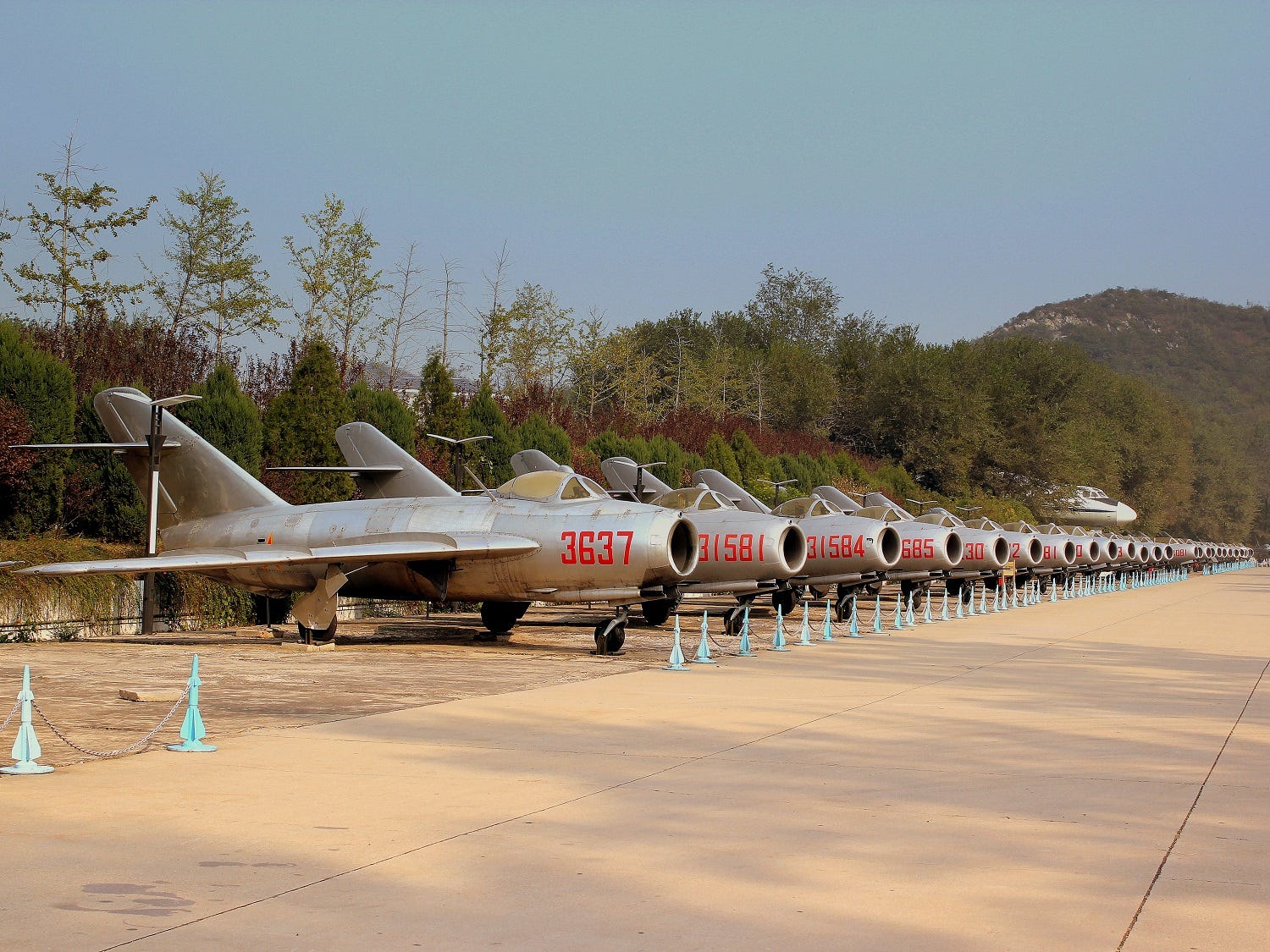The NSA Listened as Chinese MiGs Shot Down American Warplanes
Declassified docs detail Vietnam War air clashes
It was Sept. 20, 1965 when the navigation equipment aboard Capt. Philip Smith’s F-104 Starfighter failed.
Smith’s mission was to escort an airborne early-warning plane patrolling above the Gulf of Tonkin. Instead, his supersonic jet strayed over Hainan Island—through airspace belonging to the People’s Republic of China.
Chinese radars detected the incoming F-104. MiGs raced towards the American jet, shooting it down. Smith survived the incident. China imprisoned the captured pilot, freeing him 1973.
Now there’s new information about the shootdown from the National Security Agency and the Pentagon’s Central Security Service. On Dec. 11, the agencies released 170 out of 1,600 soon-to-be-declassified documents involving Americans captured or deemed missing in action during the Vietnam War.
Many of the partially-to-heavily redacted documents are signals intelligence reports written in the aftermath of aircraft losses.
Most of the trove references American pilots lost over North Vietnam. But Chinese fighter jets intercepted and shot down American aircraft on several occasions, killing several pilots. It’s a little known and politically sensitive aspect of the war in Vietnam.
Some of the details are still classified.
“It appears that possible as many as 10 Chicom fighters … reacted to the hostile aircraft over Hainan Island,” noted a Sept. 20 report following Smith’s capture, using an abbreviation for Chinese communists.
“This shootdown of a U.S. aircraft intruding over Hainan Island represents a sharp departure of policy on the part of the Chicoms from that demonstrated during a similar intrusion of 9 April 1965,” the report added.
This is reference to an April clash between Navy F-4 Phantoms and Chinese MiG-17s. During the dogfight, a MiG gunned down an F-4, killing both pilots. The report suggests the Chinese were more aggressive during the later September incident, reflecting a “sharp departure of policy.”
“On this [April 9] occasion the Chicoms appeared to be exerting considerable effort to avoid an engagement,” the report states. “Although presented with apparently favorable circumstances for an attack on the intruding hostile aircraft.”
Complicating efforts to find out what happened during the September shootdown, a U-2 spy plane handling signals intelligence—known as Trojan Horse—was busy over Laos.
 At top—Air Force F-104s in 1960. Air Force photo. Above—Chinese MiG-17 fighters at the Datangshan China Aviation Museum in Beijing on Oct. 19, 2012. Photo via Wikimedia
At top—Air Force F-104s in 1960. Air Force photo. Above—Chinese MiG-17 fighters at the Datangshan China Aviation Museum in Beijing on Oct. 19, 2012. Photo via Wikimedia
A later report referencing Smith’s capture walked back suggestions there was any change in Chinese policy. It also vaguely referenced multiple later incidents involving Chinese forces firing on American warplanes.
Armed trawlers fired on U.S. planes on at least three separate occasions between December 1966 and February 1967.
On Aug. 21, 1967, Chinese MiGs shot two Navy A-6 Intruders out of the sky over southern China. One pilot, Lt. Cmdr. Robert Flynn, would spend more than five years in a Chinese prison. The other pilot, Cmdr. Jimmy Buckley, died in Flynn’s plane.
Two other pilots in the second aircraft died.
The report appears to relate to this incident, and compares it to the September shootdown. “It does emphasize again the continued Chicom sensibility to U.S. combat/recon acft [sic] operating near or over Hainan claimed airspace,” the report states.
There were other, earlier incidents. On April 24, 1965, seven Navy F-4s traveling near Hainan spotted an incoming surface-to-air missile.
“The flight broke right and down and the missile detonated behind flight,” stated a report from U.S. Army Pacific and addressed to the NSA.
But the report suggests that intercepted “VHF multichannel” Chinese military signals claimed credit for the “shootdown of a ‘hostile’ aircraft.” The U.S. did not acknowledge the loss of a plane in that incident. That is, if a shootdown even occurred.
Another batch of reports came after the death of Cmdr. Joseph Dunn. On Feb. 14, 1968, Dunn flew his propeller-driven A-1 Skyraider from the Philippines to the USS Coral Sea aircraft carrier. As Dunn neared Hainan, “probably MiG-17s” attacked and shot down the pilot.
Dunn’s body was never found.
“It is expecteg [sic] that Chicoms will continue defensive patrols along pattern established in past, reacting aggressively only when Chicom-claimed territorial airspace is violated,” one of the reports stated.
No comments:
Post a Comment